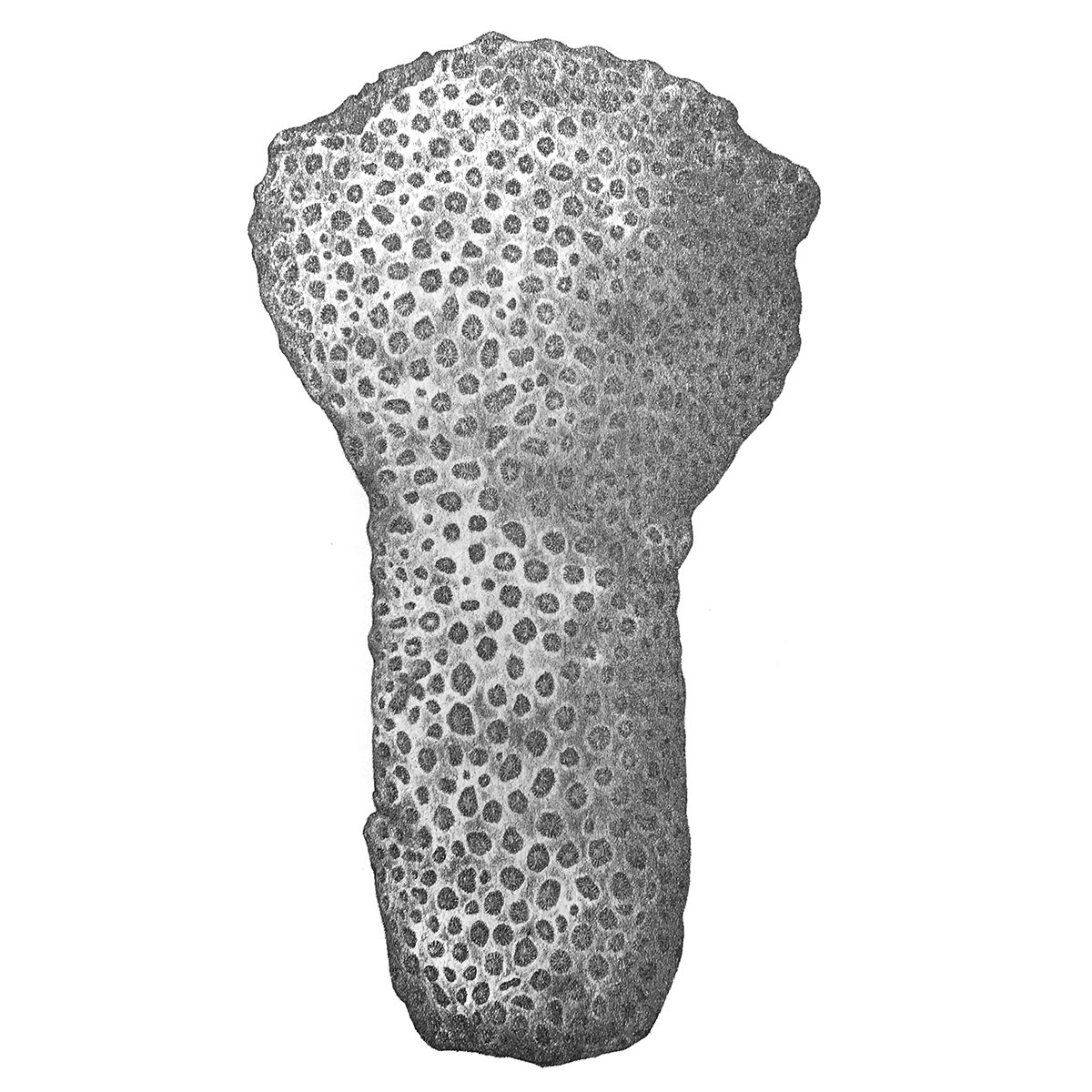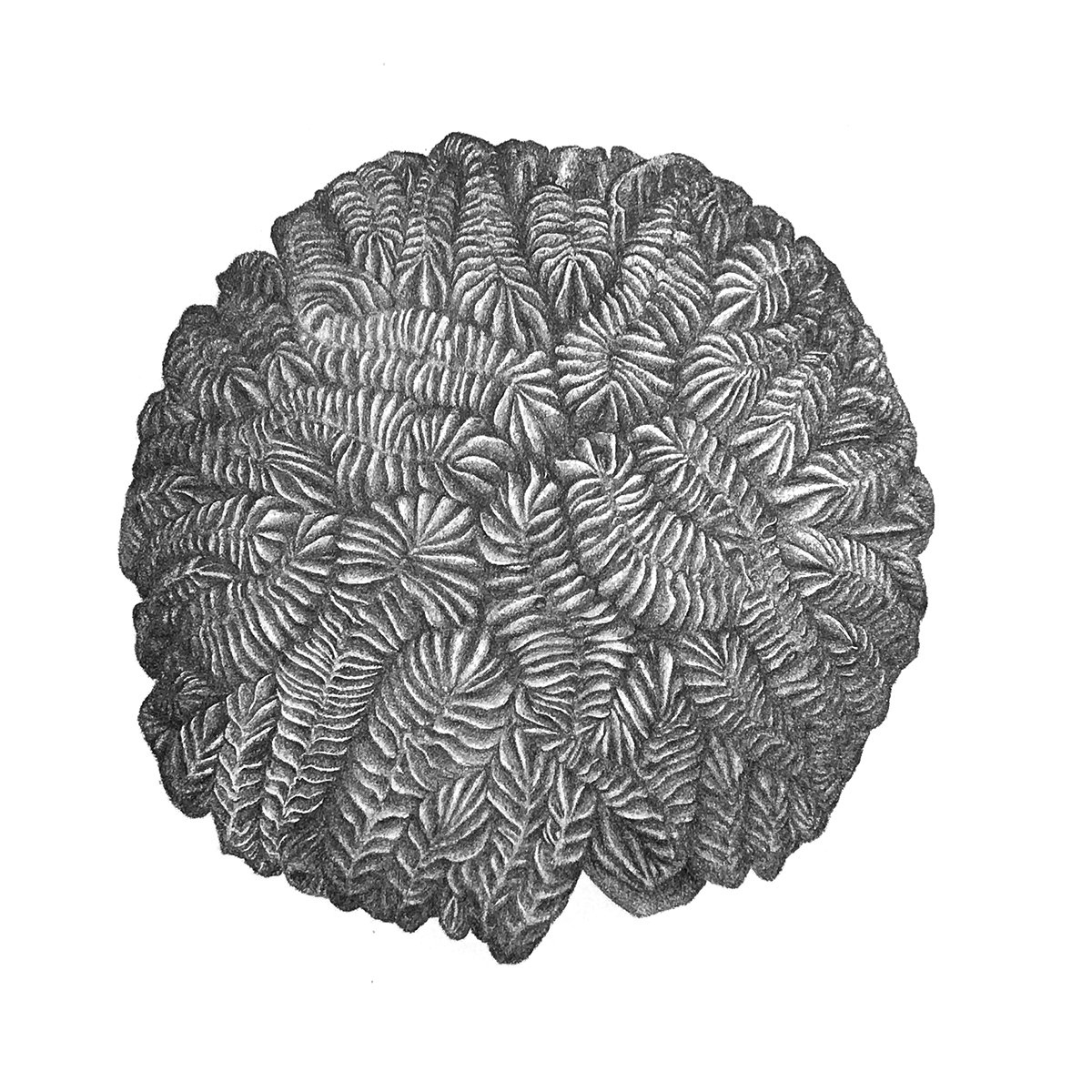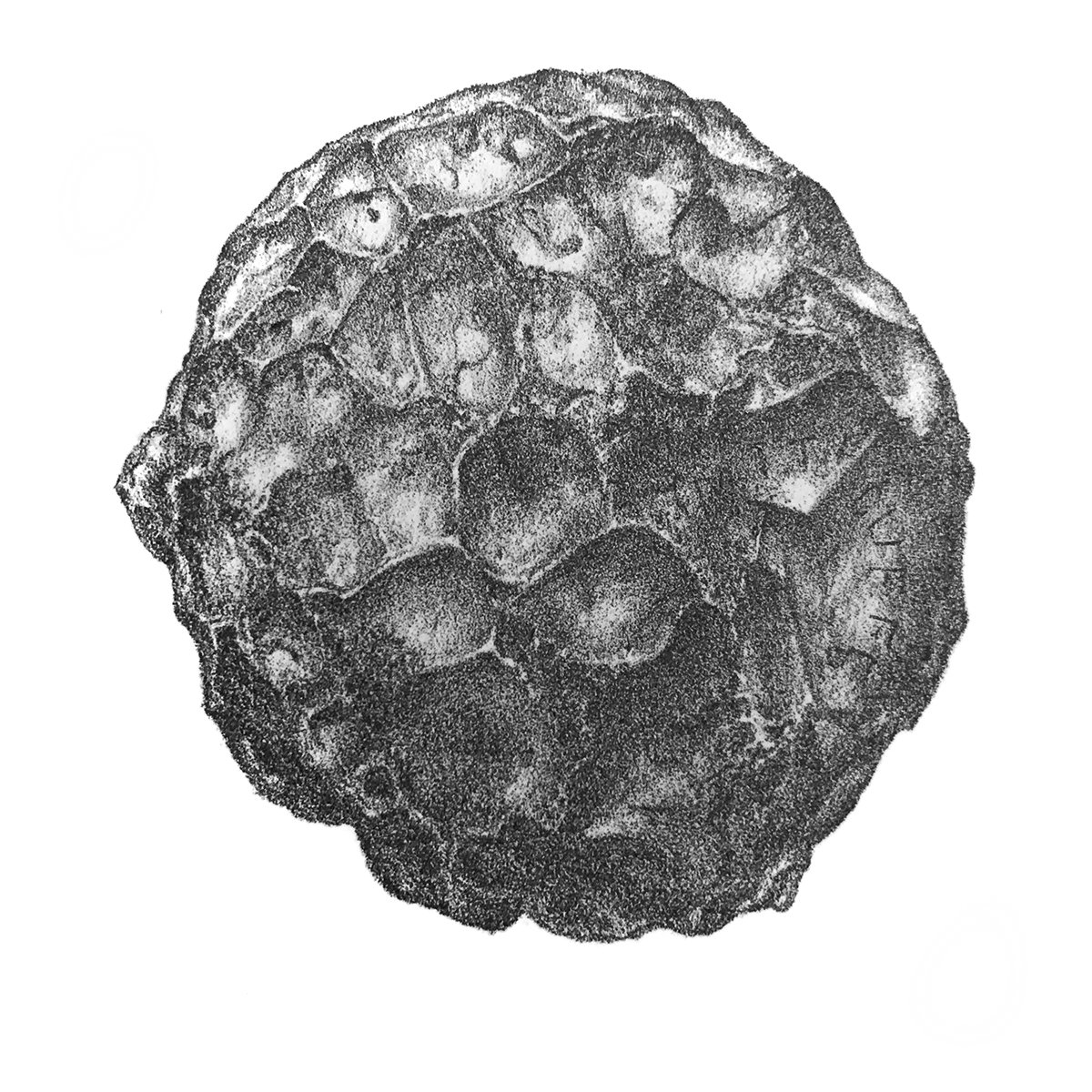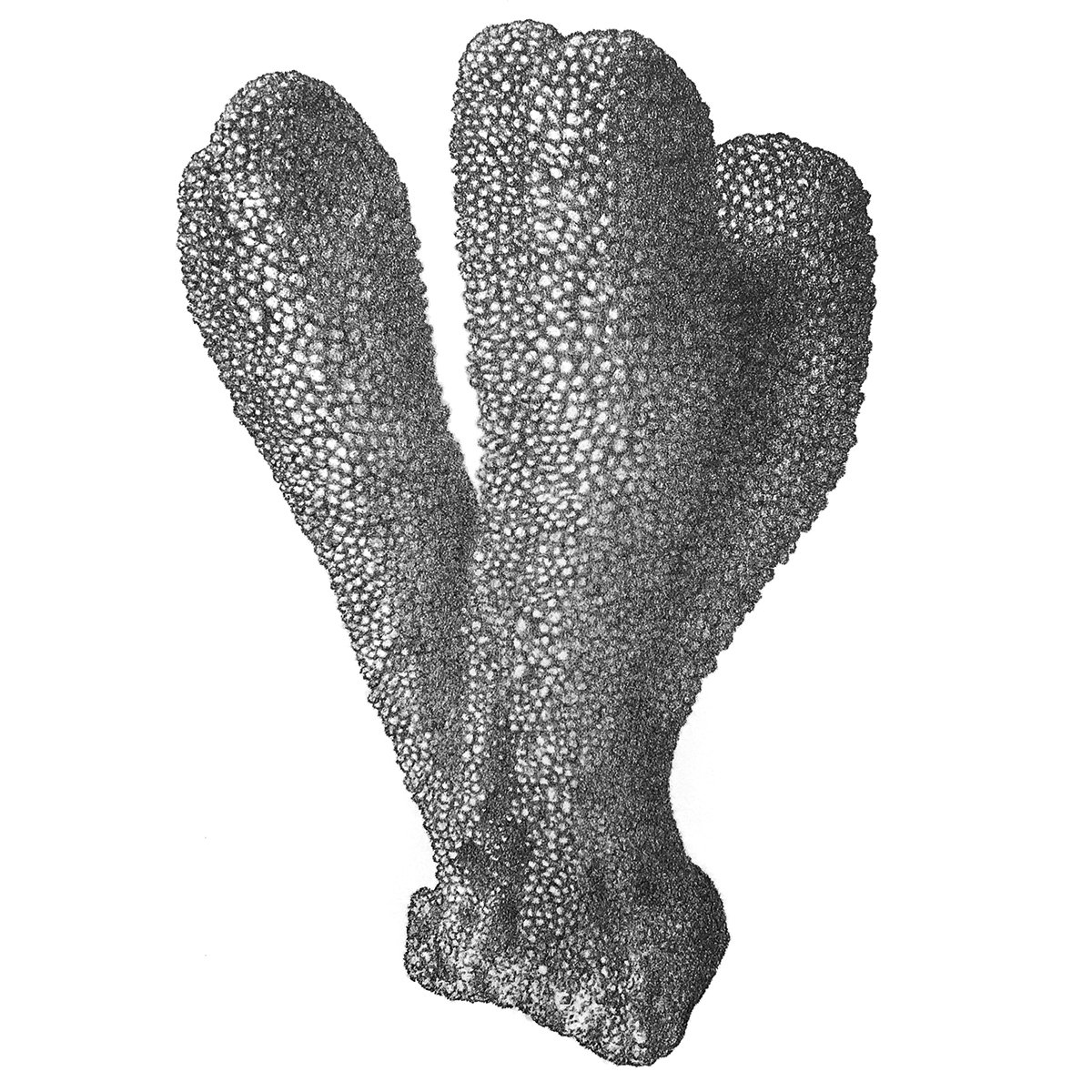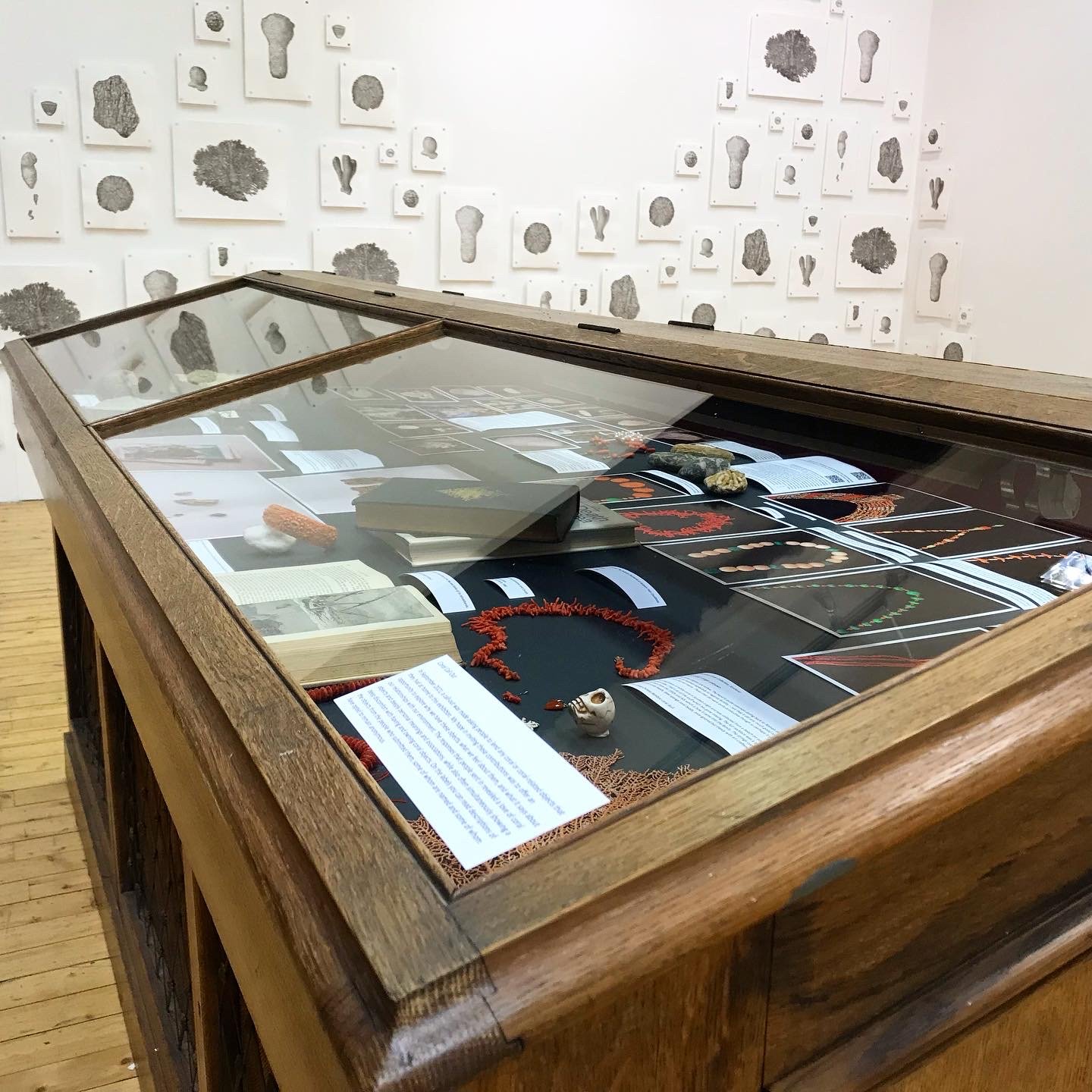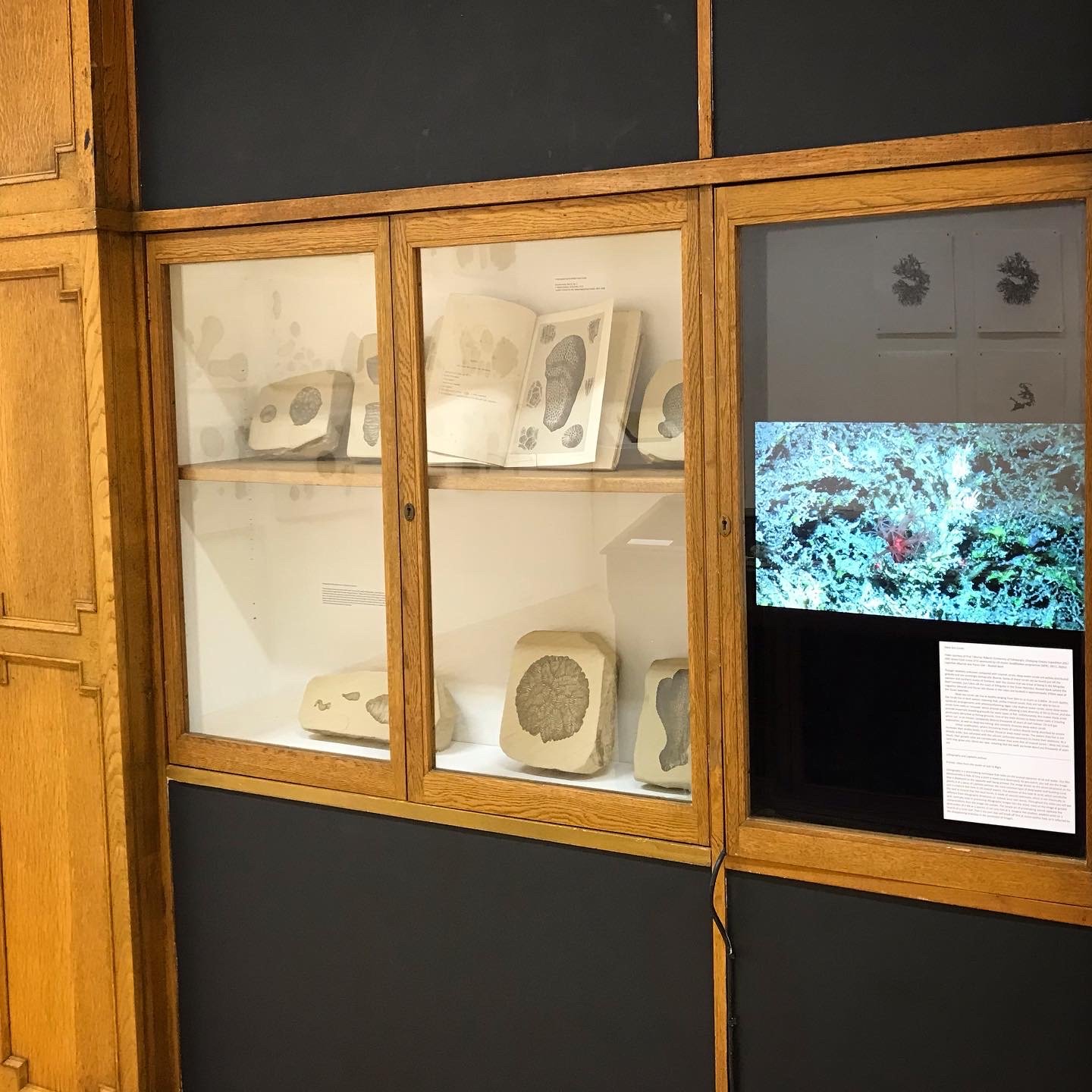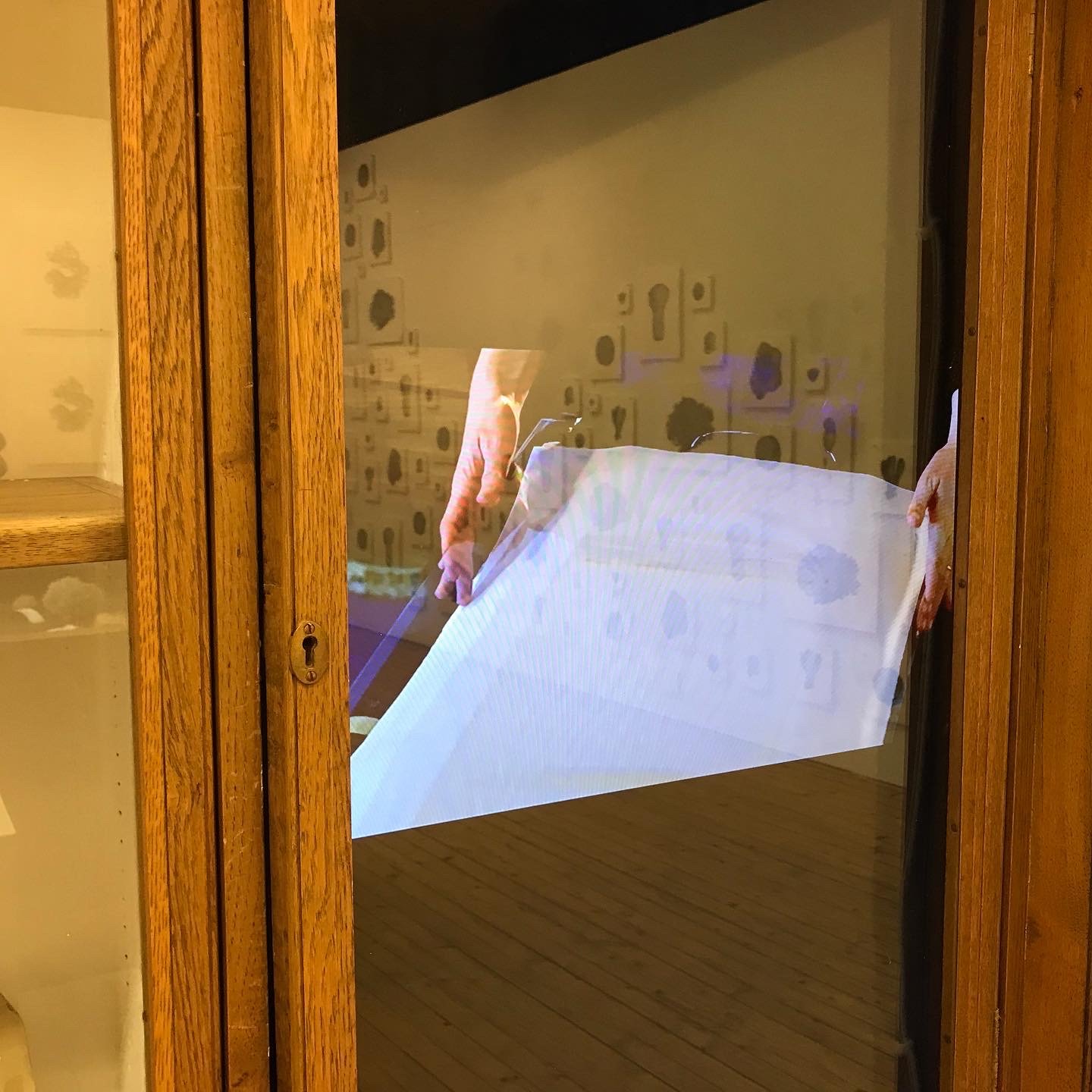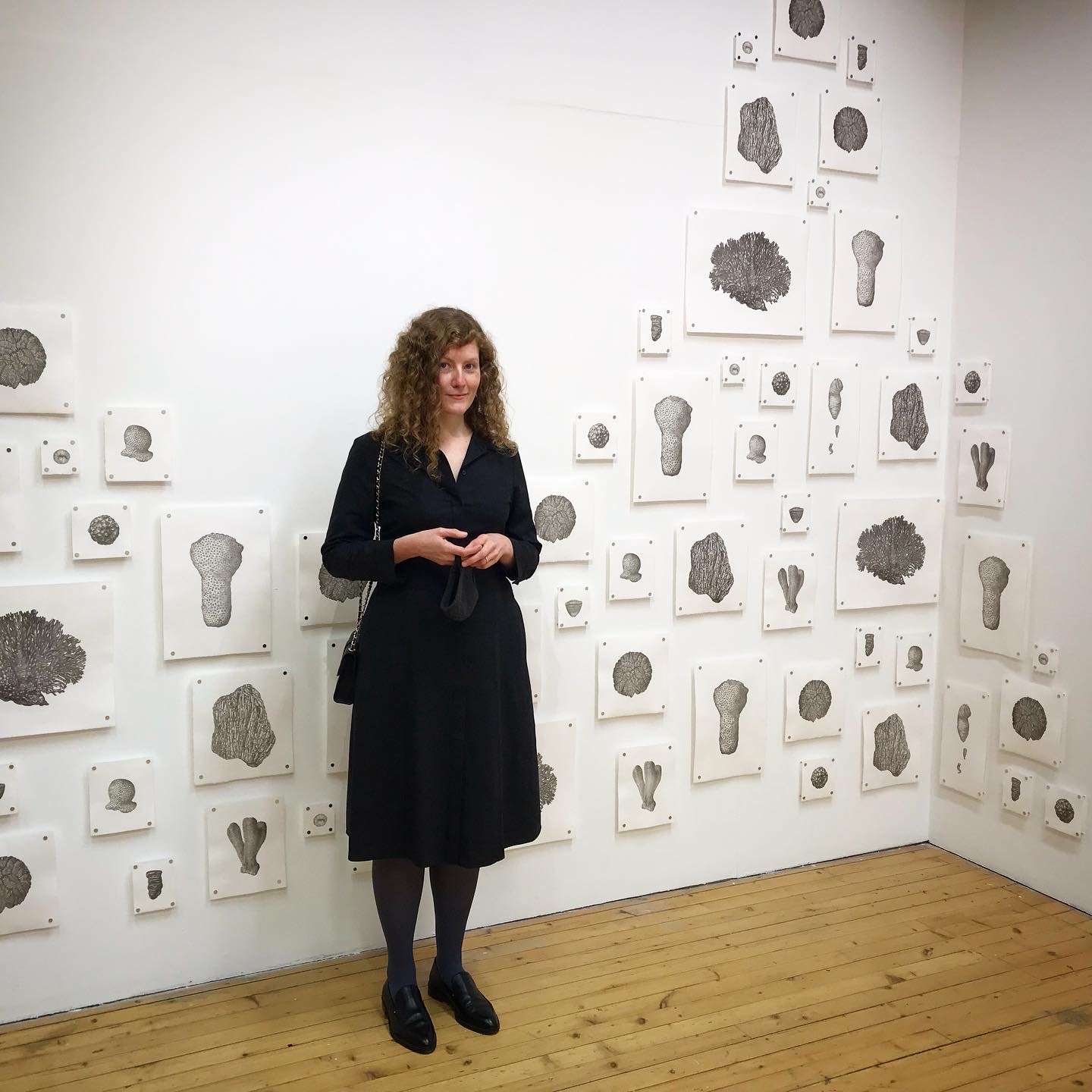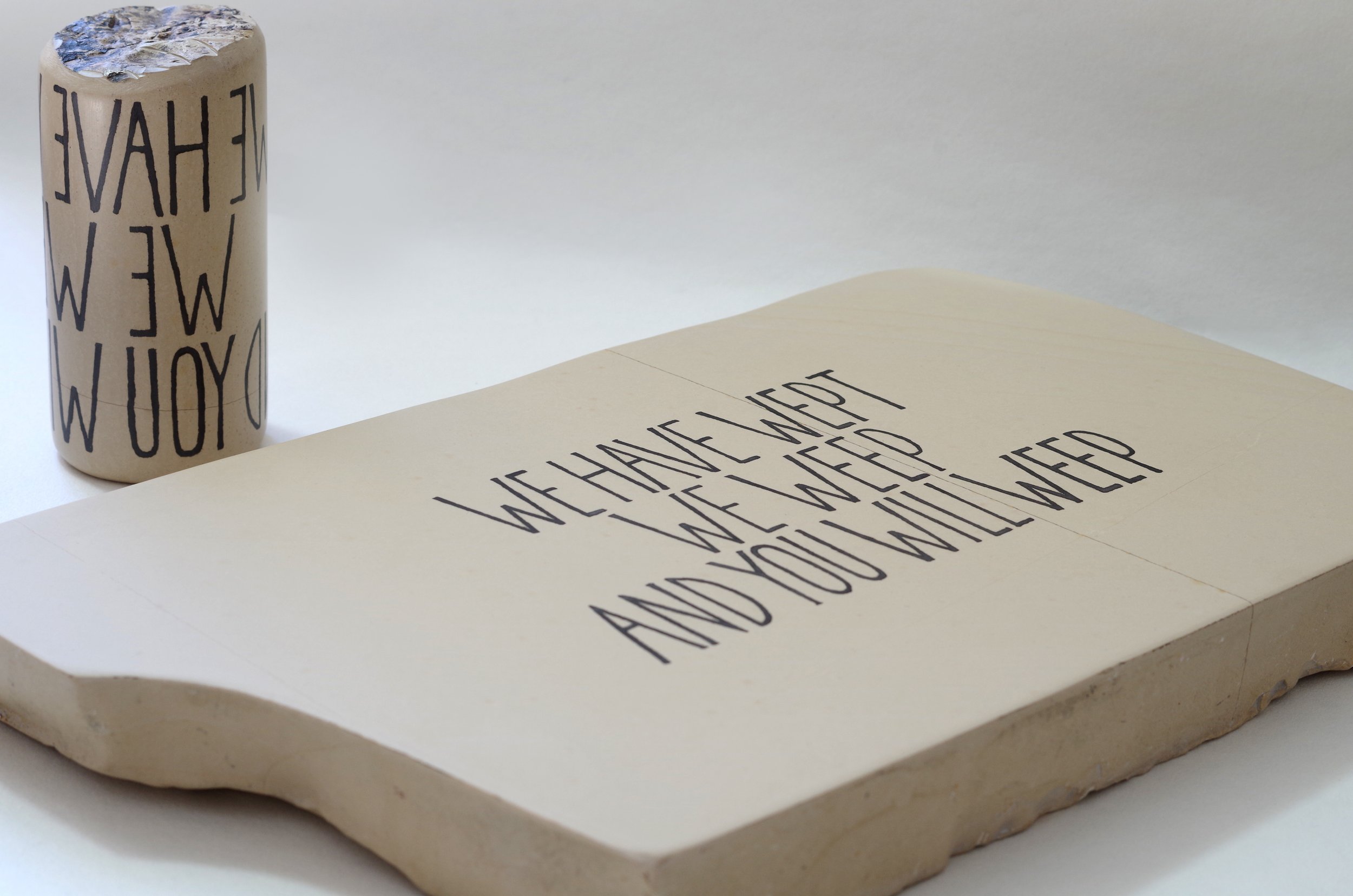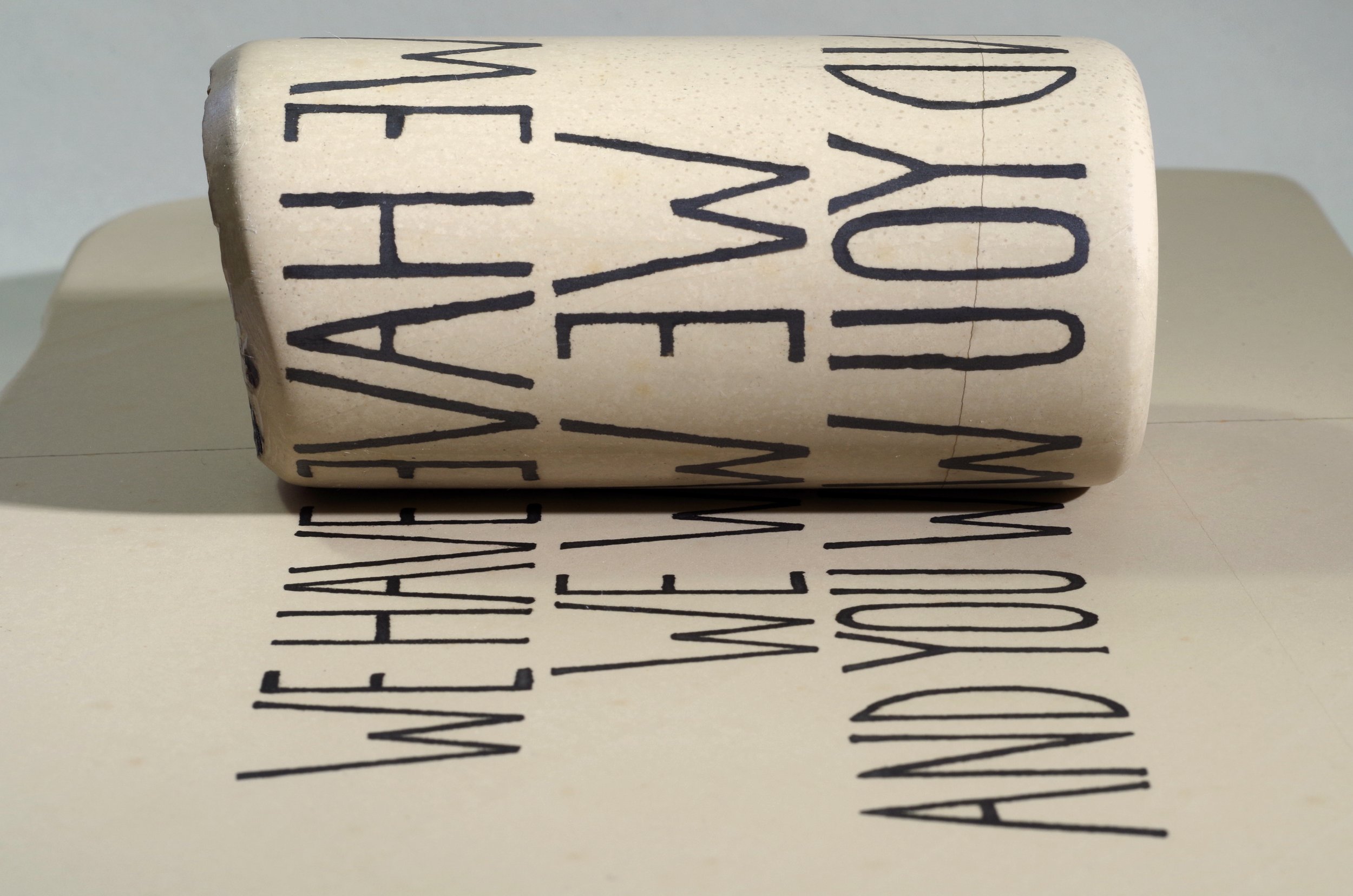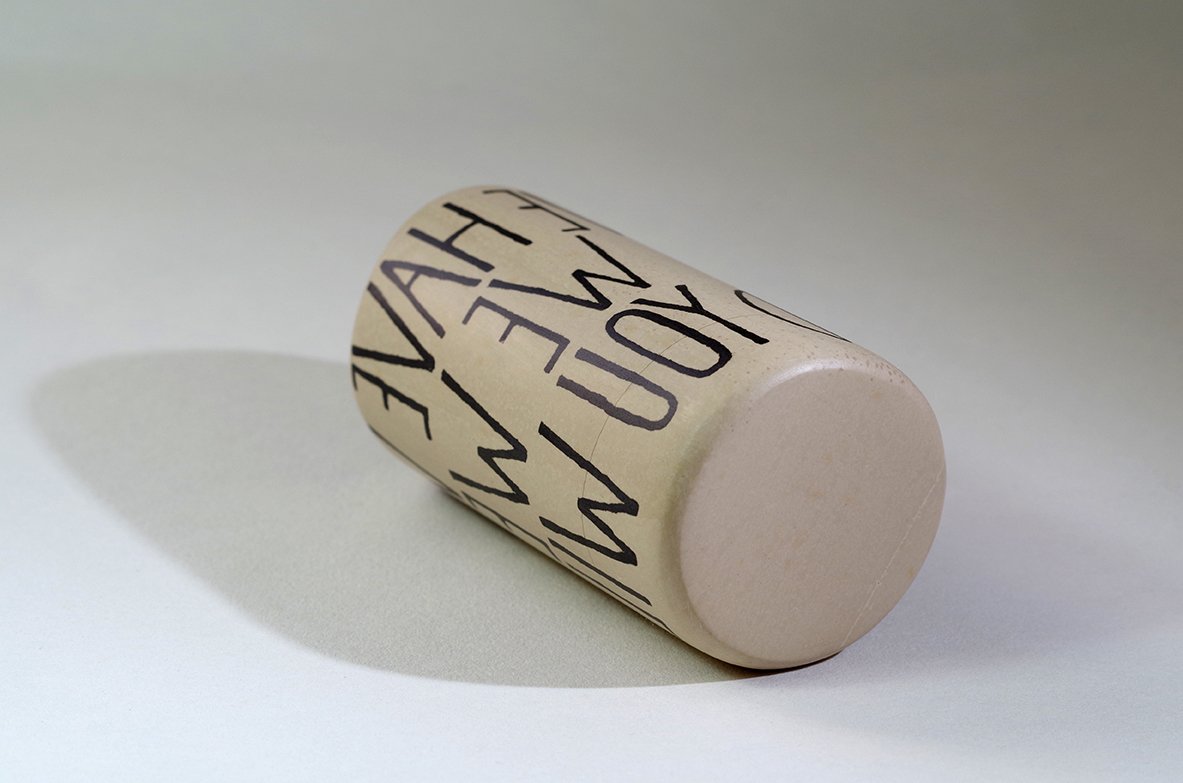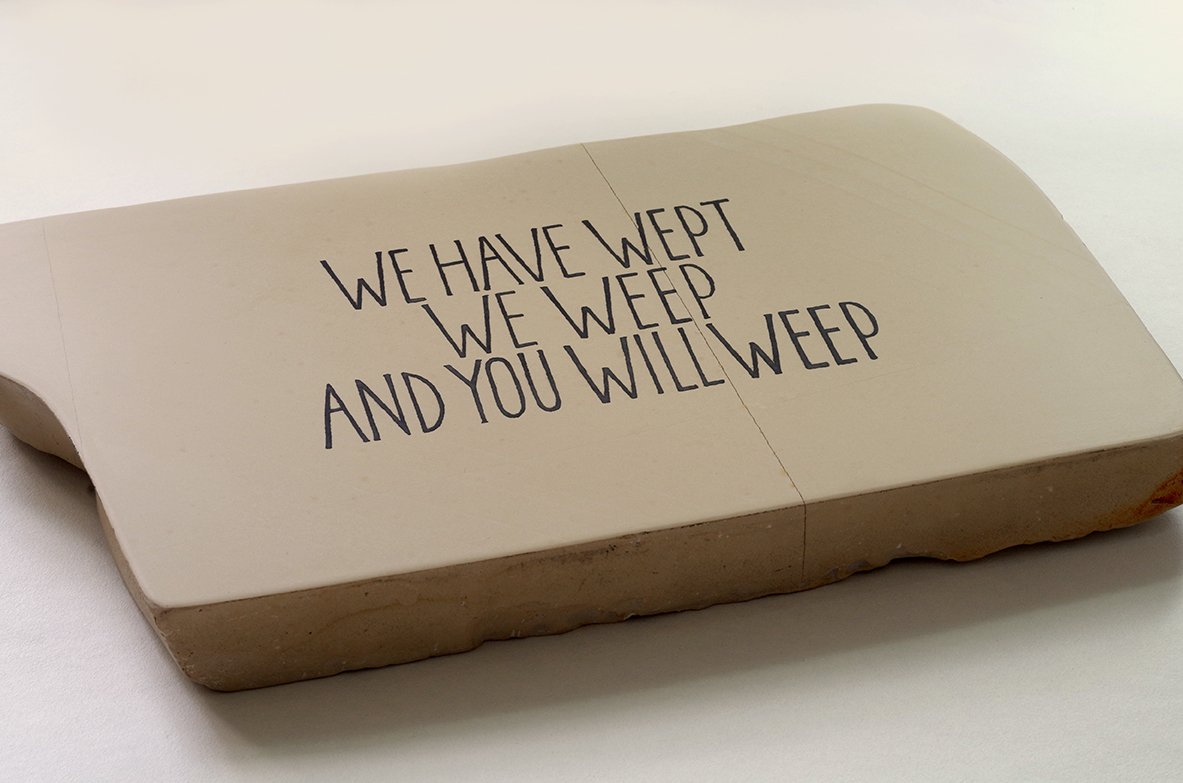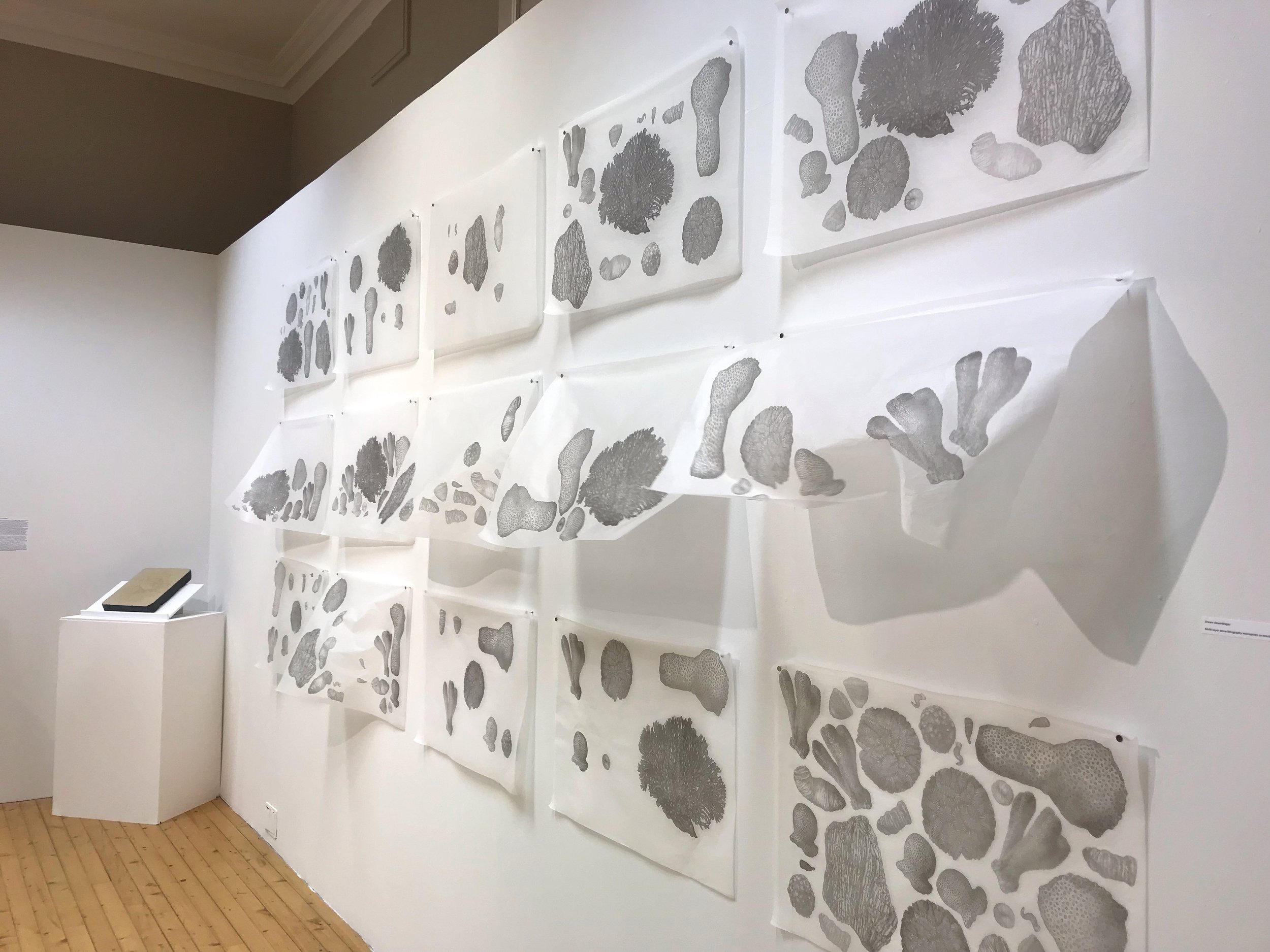I’m re-posting my email newsletter here, but you can also sign up (here or in the sidebar) to receive upcoming newsletters directly in your inbox.
Hello from inside a tangle of snowflakes on this wintry afternoon! This autumn has been quite a busy one, so it might be worth grabbing a cup of tea and getting comfortable (well, it's mostly pictures, really).
In mid-November, my exhibition 'Our Unfathomable Depths' opened in Edinburgh as part of Summerhall's COP26 offering of exhibitions. As you may already know from my previous email (or may have deduced from the photos!) the exhibition is focused on coral. More specifically, the exhibition is focused on our relationship to coral from a domestic context.
A few close-ups of the coral object prints from the "reef" of lithographs in the first photo. The images were made using stone lithography which was done on smaller, broken pieces of stone. These printing stones are also on display in the exhibition. The corals that the images were drawn from were either found in books, for sale online, or were drawn from life from actual coral objects.
This meant looking at coral or coral-related objects that we have in our homes, as well as investigating the deep-water coral reefs that live just off the coast of Scotland – though at such depths that not many people are aware of them or the threats they face.
Above: A series of prints about Lophelia pertusa, the most common deep-water reef building coral found in British waters, and around the globe. The series explores the subject of increasingly corrosive waters in the deep ocean as a result of of ocean acidification due to climate change. The skeletons of this type of coral are chemically very similar to the lithographic limestone used to make the prints, so the limestone and the coral react to acidification in a similar way, thus the disappearing image in the prints. A video in the exhibition shows the process of deleting parts of the image on the stone through higher-than-normal concentrations of the acid used in processing images. The stone was printed at various stages throughout this process and the printing stone with the obliterated image is also on display.
I will also be giving an artist talk at Summerhall on Sunday the 12th of December from 5–6pm. Starting at noon on the 12th, there will be an afternoon of talks given by all of the artists exhibiting in the different galleries of Summerhall: Maria McCavana, Studio Imposters, Scott Hunter and lastly myself. Please join us if you can!
A few more photos of the exhibition: 1. Vitrine full of coral and coral-related objects submitted by members of the public to the 'Call Out for Coral' this September. 2. Display case with the lithography stones used to print the works in the exhibition, plus a little video with footage of deep-water corals [Video courtesy of Prof J Murray Roberts (University of Edinburgh). Changing Oceans Expedition 2012 (RRS James Cook cruise 073) sponsored by UK Ocean Acidification programme (NERC, DECC, Defra). Logachev Mounds and Pisces Site – Rockall Bank]. 3. Still from a film depecting the process of printing and destroying an image of Lophelia pertusa (mentioned above). 4. Me on opening night after everyone had gone home. Thank you to all those who came!
This exhibition runs until the 23rd of December at Summerhall in Edinburgh and can be visited Wednesday – Sunday, 12–6pm. More information can be found here: Our Unfathomable Depths - Summerhall, Edinburgh. All prints are for sale and 30% of any sales will be donated to the Marine Conservation Society – a UK-based charity dedicated to protecting our seas, shores and wildlife, and also a member of the Deep Sea Conservation Coalition.
'Art of the Possible' inside Glasgow Art Club's beautiful main gallery.
Another COP26 exhibition that I took part in was a group show at Glasgow Art Club. The exhibition shows art made in response to the climate crisis by Glasgow School of Art staff and students and also by Glasgow Art Club members. My work is in the blue display case on the left in the above photo, and there are also more detailed images of it below.
You can find more information about my object in the statement on the website of the Glasgow Art Club: Moveable Hunger Stone and Shifting Baselines Tool - Glasgow Art Club.
A few detail shots of the works in the display case. These objects are small printable sculptures made from lithographic limestone. They are based on 'hunger stones' that can be found in some Central European waterways during periods of extreme drought. The cylindrical stone of 'Shifting Baselines Tool' was intended as an instrument that could be inked up and then rolled along, printing its message wherever necessary. The flat stone is intended as a 'Moveable Hunger Stone' which is small enough to be transported to new locations as our climate continues to change.
This exhibition runs until December 7th at Glasgow Art Club and is open Monday-Sunday 11am–6pm – so there are still a few days left to catch it if you are in Glasgow!
One more image from 'Our Unfathomable Depths' at Summerhall showing an installation of prints made on a fine, transparent paper that moves in relation to the movements of visitors.
Since the exhibitions opened, I've been enjoying a little break after all the excitement and work of the past few months. These short, opalescent, northern winter days are so perfect for reading and drawing and resting. Wishing you a wonderful holiday period and a very happy new year!


